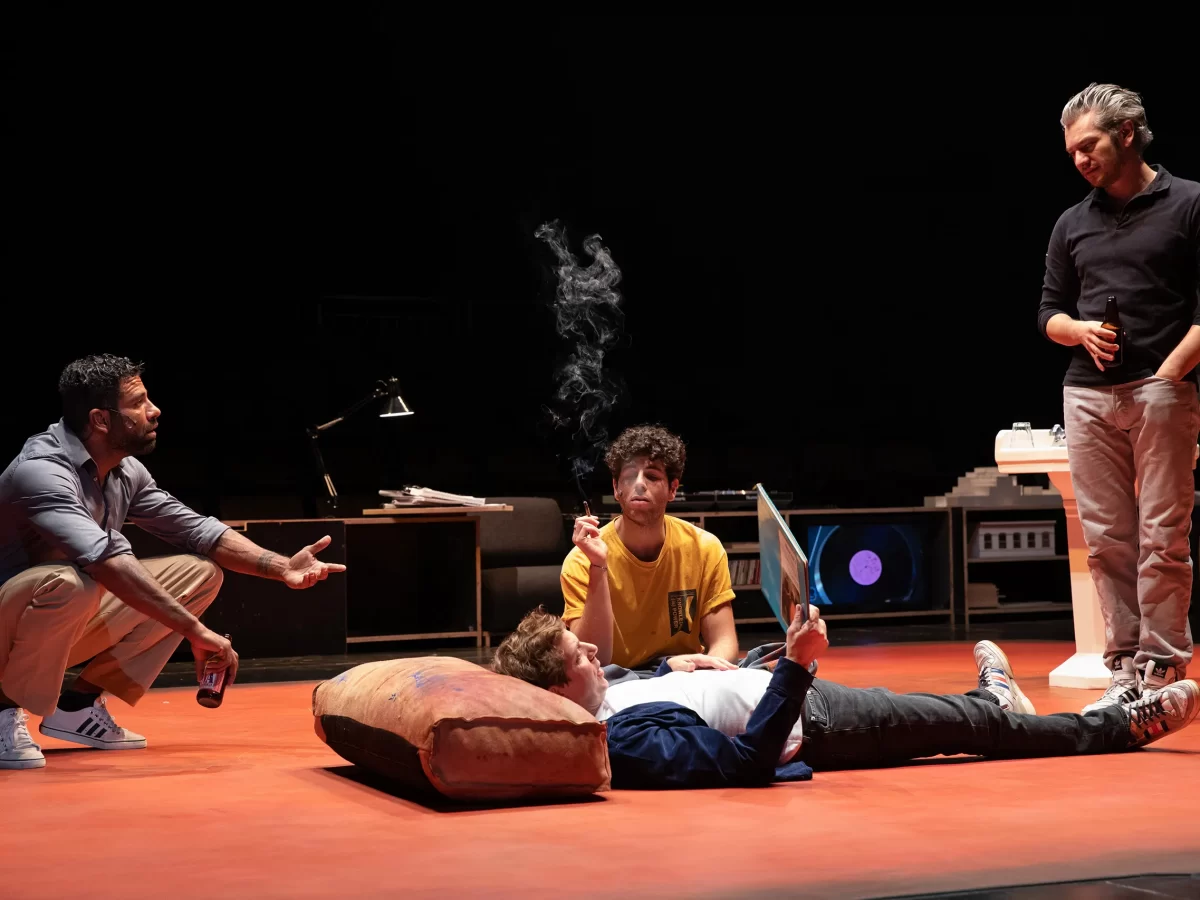Unmasking empathy: An examination of the ethics behind Hanya Yanagihara’s A Little Life
By Saskia Koopman
In the world of theatre certain productions possess the power to provoke lasting introspection, leaving their audience emotionally stirred or deeply affected. A recent viewing of the poignant theatrical adaptation of A Little Life fell into such a category, as Yanagihara’s tragic tale unfolded before my eyes. Indeed, in contemporary literature, as well as in their theatrical counterparts, few novels have been as polarising and emotionally taxing. As you are invited into the tormenting minds of Jude Francis and his friends, an important question comes into mind: are we as consumers of art inadvertently glorifying, or even fetishising trauma?
A glimpse into the plot:
For those unfamiliar with the novel or play, Hanya Yanagihara’s narrative centres around four friends as they navigate the textures and complexities of life in New York. However, it becomes evident that Jude stands apart from the rest of the group. Despite the translated French title ‘Une vie comme les autres’ which reads as ‘A life like any other’, Jude’s life is a world apart from those of his peers; he suffers from trauma, a haunting past life, and an excruciatingly guilty conscience. He harms himself.
Ivo Van Hove’s stage adaptation is palpably faithful to Yanagihara’s novel, as he examines the emotional intricacies of the characters and the struggles of their respective psyches. In an attempt to navigate the characters’ shifting perspectives, the omniscient narrative voice unflinchingly immerses itself in the harrowing past of a broken Jude St. Francis. In doing so, the play doesn’t hesitate to demonstrate the harsh and often distressing events which Jude endures, making this unflinching production both strong and challenging. This disturbing exploration of love, friendship, and its bounds in the face of unimaginable suffering and harm leaves its audience visibly moved by this raw depiction of trauma and pain; Yanagihara’s story is a difficult read and an even harder watch.
The production’s unswerving focus on the intricacies of Jude’s past spark a heated debate on the artistic portrayal of trauma, and essentially, it is this very depiction of the darkness which permeates his life, wherein lies the crux of the issue. Audiences, emotionally drained as they grapple with the intensity of the narrative, have been quick to label this story a “misery-soaked epic” (Slate Audio Book Club), accusing its author not only of lacking artistic taste but also of dangerous moral failing. Her refusal to sugar-coat her narrative makes the plot too much for some to bear, inviting allegations of creating an unfair depiction of trauma in which she violates the canons of literary taste.
While the intention behind this depiction of trauma undoubtedly seeks to elicit empathy and understanding, perhaps almost serving as cathartic, it is crucial to consider how such an unfiltered portrayal of psychological trauma could unintentionally slip into the realm of inadvertent fetishization. Empathy is one of art’s vital consequences, allowing us to connect and share experiences, contributing to our understanding of the human condition. That being said, concerns arise when in this particular case, the depiction of trauma becomes a form of entertainment in itself, potentially even lending a voyeuristic experience for the audience. Certainly, in A Little Life, readers and viewers are invited to witness the most unthinkably intimate and painful aspects of Jude’s narrative. While some may deem such scenes as fostering empathy and raising awareness about the plethora of lasting effects of trauma, it comes as no surprise that others may worry about our unconscious fascination with suffering. To put it bluntly, the line between empathetic engagement and voyeuristic curiosity here may have become slightly blurred, especially when the narrative lingers on such distressing content.
Yanagihara’s work interestingly raised questions concerning the allure of suffering in literature and art; is there truly a tendency to fetishize trauma due to its exploration of heightened emotional experience? And ultimately, does our fascination with suffering stem from an innate desire to feel more deeply, or perhaps more authentically?



